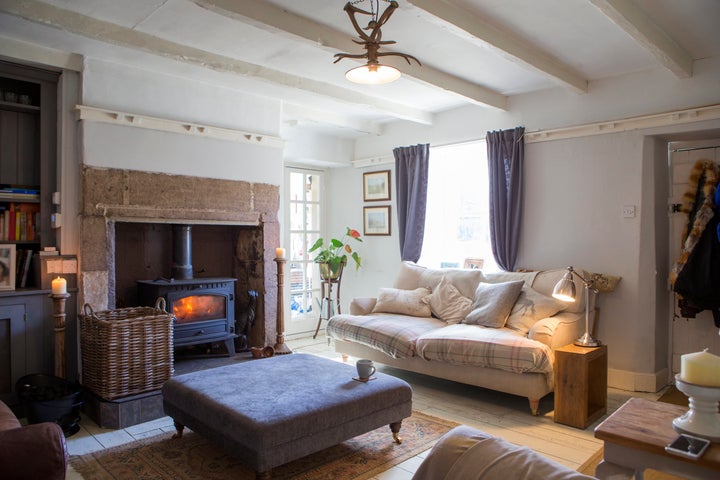According to the World Health Organisation (WHO), exposure to air pollution is considered to be the biggest single environmental risk to human health. This includes not only outdoor air pollution but indoor air pollution too.
In the UK, Professor Stephen Holgate is chair of the working party that produced the Royal College of Physicians and Royal College of Paediatrics and Child Health report ‘Every breath we take: the lifelong impact of air pollution’.
He says: “We live most of the time indoors and the important thing about this is that the air pollution from outside gets inside, but also inside we generate a different set of chemicals and particles that we breathe in. There has been very little attention paid to what goes on inside buildings, inside our homes, workplaces and schools regarding how it interacts.”
With Professor Holgate’s words in mind, we go from room to room in an average home, examining potential sources of indoor pollution and what we can do about them.

Kitchen
Cooking food on too high a heat causes smoke and releases particles. Your kitchen may also contain cleaning products with VOCs (volatile organic compounds). VOCs are found in thousands of everyday products - from new carpets to oven cleaners. VOCs are common in indoor air and their effects are usually minor, but they can be irritants to susceptible people, exacerbating symptoms for those with asthma, rhinitis and sensitive skin. To reduce VOCs in the kitchen, use more natural cleaning products. There’s little that can’t be cleaned with washing-up liquid, soda crystals, white vinegar and lemons.
Living areas
You’ll probably find VOCs in new carpet and new MDF furniture, some paints, air fresheners, scented candles and room deodorisers. If a member of your family is sensitive to VOCs, stick to solid wood flooring, low VOC paint and lose the artificial fresheners. If you want the living room to smell sweet, try fresh flowers (be aware of the pollen). Check out retro shops for solid wood vintage furniture, and upcycle it (using low-VOC paint, of course).
We all love a roaring, toasty fire, and open fires or wood burners release soot and ash particles into the indoor air. Keep these particles in your home to a minimum by getting the chimney swept regularly, using smokeless fuel, or wood that is properly seasoned and dry, and checking that the rope seal on your wood burner door is unbroken. And it goes without saying that tobacco smoking is the worst form of indoor air pollution – either give up altogether, or smoke outside.
Pets are a walking (or curled up on the sofa) bundle of potential allergens and pollutants. Your dog or cat holds pet dander in their fur that can cause allergies in some people, and bacteria and viruses on their paws. Keep animals clean, and use a vacuum cleaner with a HEPA filter designed for picking up pet hair.

Bathroom
The most likely place you’ll find mould and mildew is in the bathroom. Airborne mould spores can be allergens, causing sneezing, red eyes, skin rashes, and even asthma attacks in susceptible people. Ensure your bathroom is well-ventilated or use an extractor, and clean thoroughly to prevent mould growing in the first place. In fact, address damp problems anywhere in your home to avoid mould growth. Use natural bathroom products to avoid VOCs.
Bedrooms
One trigger of asthma is an allergy to the droppings of house dust mites. These microscopic creatures live in all our homes and their droppings get fluffed up into the air when dust is disturbed. They like warm, damp places - our beds are ideal habitats. Open bedroom windows daily, vacuum regularly with a HEPA filter vacuum cleaner and wash mattress and pillow protectors and bed linen at 60°C. Keep pets and their dander out of bedrooms – no snoozing on the bed. Ask yourself if you need to use VOC-introducing aerosol deodorants and hairsprays. And perhaps invest in one of the below as well…
Air purifiers
We don’t need to live in a hermetically-sealed environment, though – we love our pets, vases of flowers, roaring log fires, perfume and crispy bacon. As well as regular cleaning, an air purifier will mop up nigh-on all airborne particles there as a result of everyday living, leaving you free to enjoy your home and breathe easily.
Indeed, Alexander Provins, who heads up Blueair, one of the world’s leading manufacturers of home air purifiers confirms, “Whilst outdoor pollution remains concern, what a lot of people don’t know is that indoor air is often up to five times more polluted than outside.
“The reason for this is a mix of outdoor pollution regularly travelling indoors in combination with concentrated dose of pollutants inside which can include anything from cigarette smoke, dust mites, scented candles to air fresheners. Air purifiers remain the most efficient way to remove these airborne pollutants and helps individuals breathe healthier.”
Blueair is one of the world’s leading manufacturers of air purifiers for home and the workplace. Using our own unique technology, HEPASilent™, Blueair air purifiers capture 99.97% of airborne particles including: pollen, dust, pet dander, cigarette smoke, bacteria, viruses and volatile organic compounds (VOCs), right down to 0.1 μm in size.